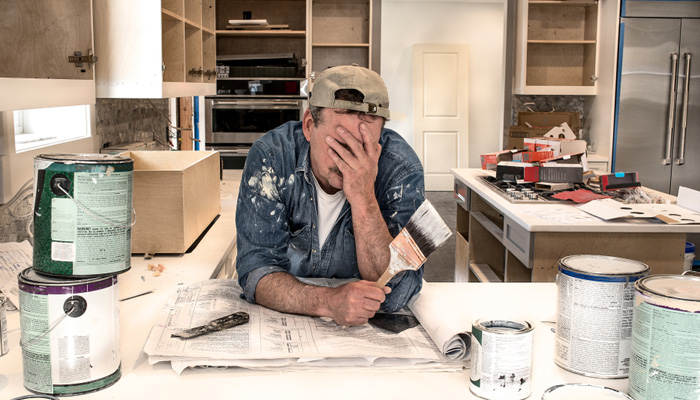Reality TV shows make home renovation seem pretty simple, right? But there are countless things that can go wrong—and countless problems to uncover—when you tackle a fixer-upper. If your client is dreaming of a home to makeover, here are the most important factors to consider.
How Long Has the Home Been Vacant?
If a home has sat vacant for a long time—in some cases, multiple years—then problems may have had time to multiply while no one was watching. When leaks aren’t caught right away, the water damage can cascade into larger problems with mold and dry rot, for example. You’ll almost certainly have greater challenges with a long-dormant home than with one that was more recently occupied.
Are There Plumbing Issues?
Plumbing is probably the biggest concern for fixer-uppers. Many minor plumbing issues can be easily fixed without impacting the buyer’s budget, but if the pipes need to be replaced, it’s a different story. Unfortunately, it’s often difficult to tell what’s happening behind the sheetrock, so a thorough home inspection [LINK TO HOME INSPECTION POST] is a must.
Is the Foundation Sound?
Buyers sometimes get so swept up in the charm of an old home that they are blind to the structural problems. A cracked or crumbling foundation is a big problem that can’t be ignored. While foundation issues can be fixed, the buyer needs to be aware of the cost. If their budget won’t stretch to cover repairs, they’ll need to keep looking for their dream home.
How Is the Roof?
Leaky roofs aren’t so difficult to repair, but the water damage can wreak havoc in attack spaces and ceilings. Chimney problems are potentially more costly. And if there’s serious structural damage to the roof, you could be looking at a budget-eating disaster. Again, a professional inspection is a must to ensure that the buyer isn’t biting off more than they can handle.
Will You Need to Knock Down Walls?
Older homes can sometimes feel like rabbit warrens with lots of small rooms leading off long hallways. Modern design, however, favors open floor plans. To achieve that kind of openness in an older home, you’re going to have to knock down some walls. Not only is this an expensive and messy process, but the buyer may be frustrated by structural elements that can’t be moved or surprises hiding in the walls.
Have Any Pests Moved In?
Fixer-uppers—especially ones that have been vacant for a while—can sometimes become a refuge for rats, mice, termites, and even bats and possums! Some pest infestations are pretty simple to deal with, but termites are a huge headache. Discovering termite damage early is key, so make sure that the home is checked before the buyer makes an offer.
Does the Home Need Rewiring?
Electrical wiring is not something you want to mess around with. Poor or outdated wiring can cause fires, so getting it inspected is an absolute must. Again, some fixes are pretty straightforward, but a licensed electrician should handle upgrading the main service panel. You’ll also want to make sure that ground-fault circuit interrupters are installed in kitchens and bathrooms. Older homes just weren’t built with our modern appliances and gadgets in mind, but with work, they can be brought into the 21stcentury.












